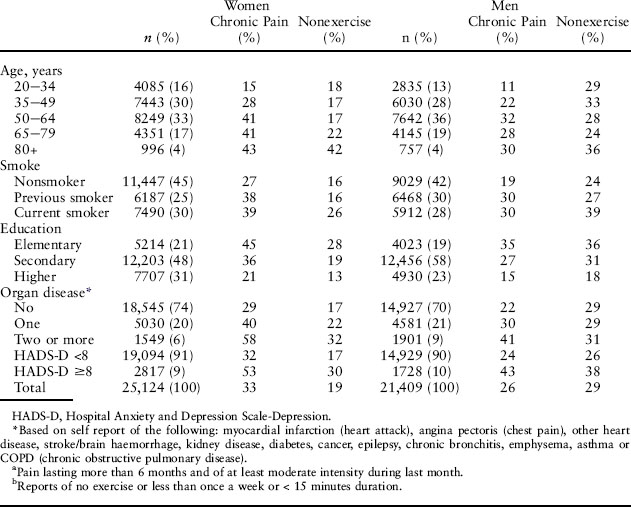Pain Management
Chronic Pain Management
Associations between recreational exercise and chronic pain in the general population: Evidence from the HUNT 3 study
Landmark T, Romundstad P, Borchgrevink PC, et al (Norwegian Univ of Science and Technology, Trondheim, Norway; St Olavs Univ Hosp, Trondheim, Norway) Pain 152:2241-2247, 2011§
Evidence Ranking
• B
Expert Rating
• 3
Abstract
The evidence for an association between leisure-time physical activity and prevalence of pain is insufficient. This study investigated associations between frequency, duration, and intensity of recreational exercise and chronic pain in a cross-sectional survey of the adult population of a Norwegian county (the Nord-Trøndelag Health Study; HUNT 3). Of the 94,194 invited to participate, complete data were obtained from 46,533 participants. Separate analyses were performed for the working-age population (20–64 years) and the older population (65 years or more). When defined as pain lasting longer than 6 months, and of at least moderate intensity during the past month, the overall prevalence of chronic pain was 29%. We found that increased frequency, duration, and intensity of exercise were associated with less chronic pain in analyses adjusted for age, education, and smoking. For those aged 20–64 years, the prevalence of chronic pain was 10–12% lower for those exercising 1–3 times a week for at least 30 minutes duration or of moderate intensity, relative to those not exercising. Dependent on the load of exercise, the prevalence of chronic pain was 21–38% lower among older women who exercised, relative to those not exercising. Similar, but somewhat weaker, associations were seen for older men. This study shows consistent and linear associations between frequency, duration, and intensity of recreational exercise and chronic pain for the older population, and associations without an apparent linear shape for the working-age population (Tables 1 and 2).

Full access? Get Clinical Tree




